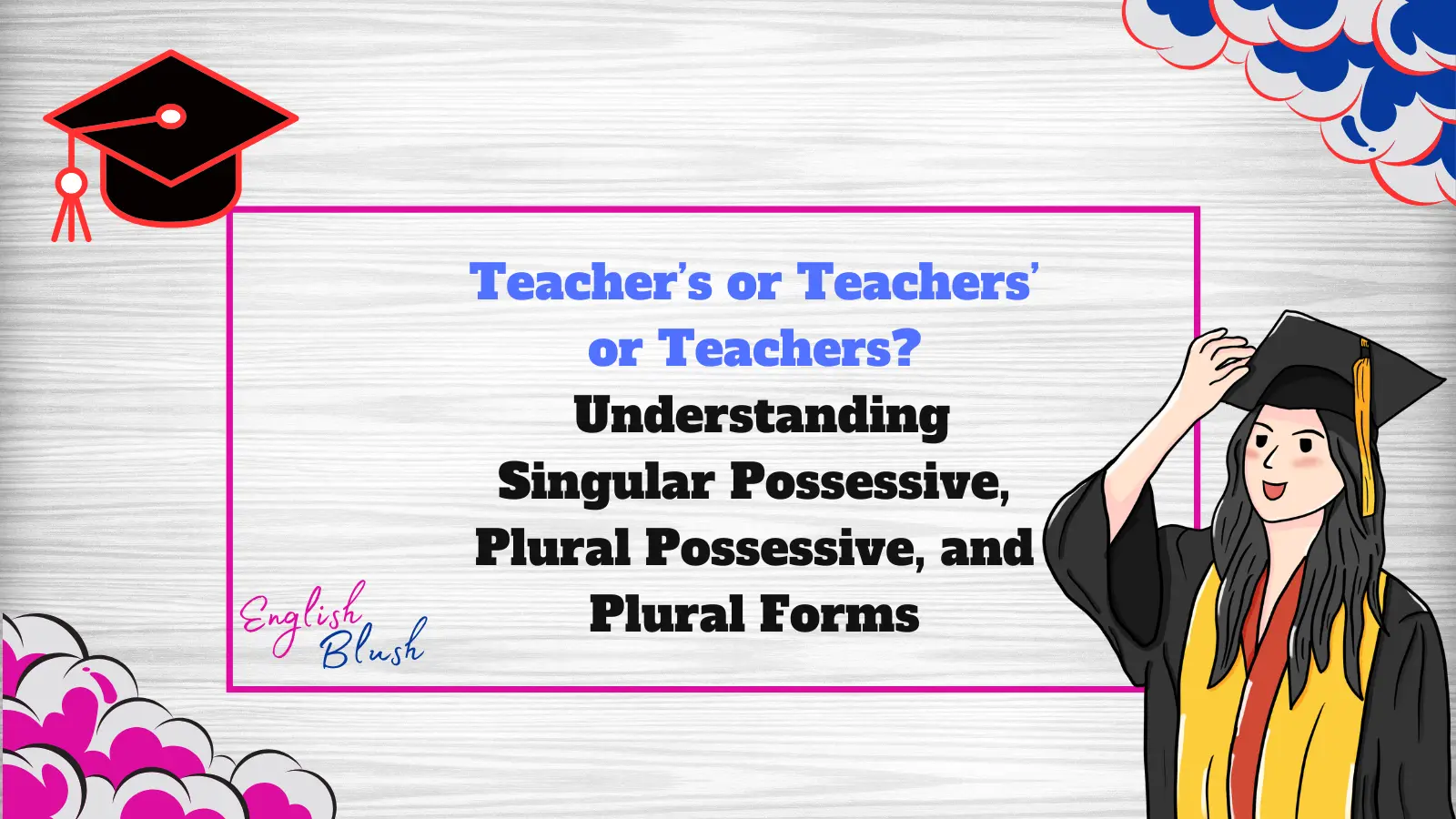When it comes to writing correctly in English, little details like apostrophes and plural endings can make a big difference. A common question is: What’s the difference between “teacher’s,” “teachers’,” and “teachers”? Let’s break it down in a simple way so everyone, even grade 3 students, can understand!
What Do These Words Mean?
Each of these words has a different meaning and purpose. Let’s explore:
- Teacher’s: Belongs to one teacher (singular possessive).
- Teachers’: Belongs to more than one teacher (plural possessive).
- Teachers: Refers to more than one teacher, but no possession is shown (plural).
Here’s a quick summary table to help you see the difference:
| Word | What it means | Example |
|---|---|---|
| Teacher’s | Something owned by one teacher | The teacher’s book is on the desk. |
| Teachers’ | Something owned by many teachers | The teachers’ lounge is upstairs. |
| Teachers | More than one teacher, no possession | The teachers are planning the field trip. |
Let’s Dive Deeper!
1. Teacher’s: Singular Possessive
When we talk about teacher’s, we mean that something belongs to one teacher.
How to Spot It:
Look for the apostrophe before the “s”.
Examples:
- The teacher’s pen is blue. (The pen belongs to one teacher.)
- I visited the teacher’s house. (The house belongs to one teacher.)
This form is perfect when you’re talking about just one teacher owning or having something.
2. Teachers’: Plural Possessive
When we use teachers’, we are talking about something that belongs to more than one teacher.
How to Spot It:
Look for the apostrophe after the “s”.
Examples:
- The teachers’ meeting was long. (The meeting involved many teachers.)
- The teachers’ books were stacked neatly. (The books belong to several teachers.)
This form is useful when you’re talking about a group of teachers sharing or owning something.
3. Teachers: Plural Form
When you write teachers, you are simply talking about more than one teacher. There’s no possession here.
How to Spot It:
There’s no apostrophe in this form.
Examples:
- The teachers are kind and helpful. (Just talking about a group of teachers.)
- We met three new teachers today.
This is the simplest form and just tells us there’s more than one teacher.
Why Do Apostrophes Matter?
Apostrophes can completely change the meaning of a sentence! Compare these examples:
| Sentence | What It Means |
|---|---|
| The teacher’s desk is messy. | One teacher owns the desk. |
| The teachers’ desk is messy. | Many teachers share the desk. |
| The teachers sit at their desks. | A group of teachers is sitting. |
See how the apostrophe placement changes everything?
Tips to Remember the Difference
Here are some easy tips to keep in mind:
- Apostrophe before “s”: One person owns something (singular possessive).
- Apostrophe after “s”: A group of people owns something (plural possessive).
- No apostrophe: Just more than one person, no ownership (plural).
Practice Time!
Let’s try a quick quiz. Fill in the blanks with teacher’s, teachers’, or teachers:
- The __________ pens are in the drawer.
- The __________ room is always tidy.
- All the __________ were excited for the holiday.
- The __________ lesson was very interesting.
Answers:
- Teachers’
- Teacher’s
- Teachers
- Teacher’s
Conclusion
Now you know the difference between teacher’s, teachers’, and teachers! Remember, it’s all about the apostrophe and where it goes. The next time you write about teachers, think carefully about what you mean to say. With these tips, you’ll never mix them up again! 😊





